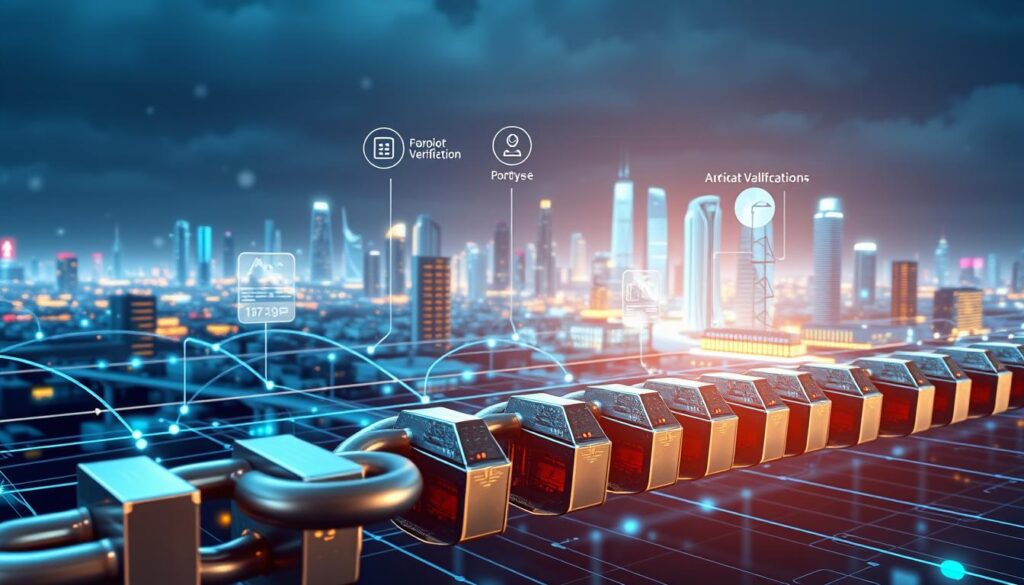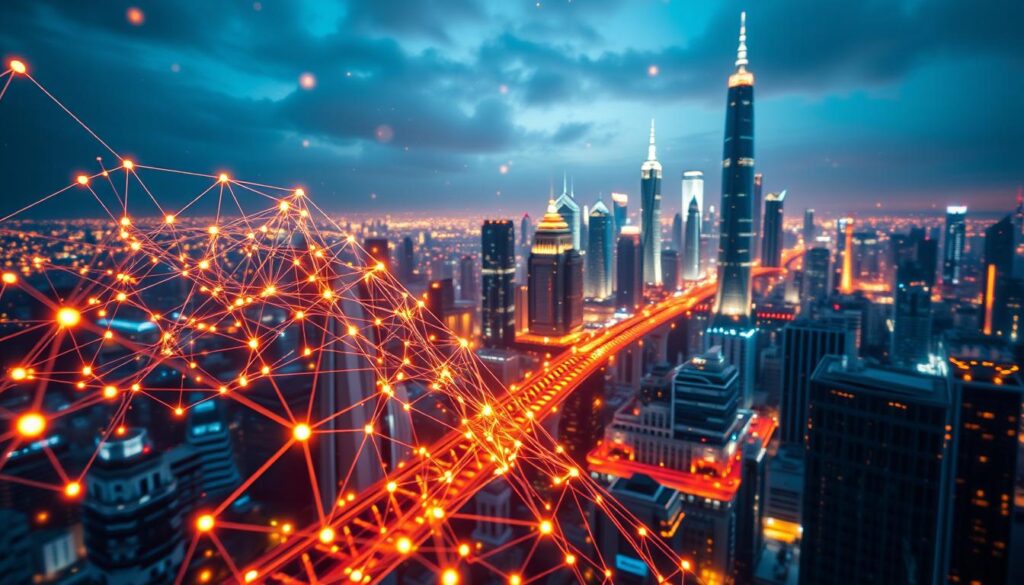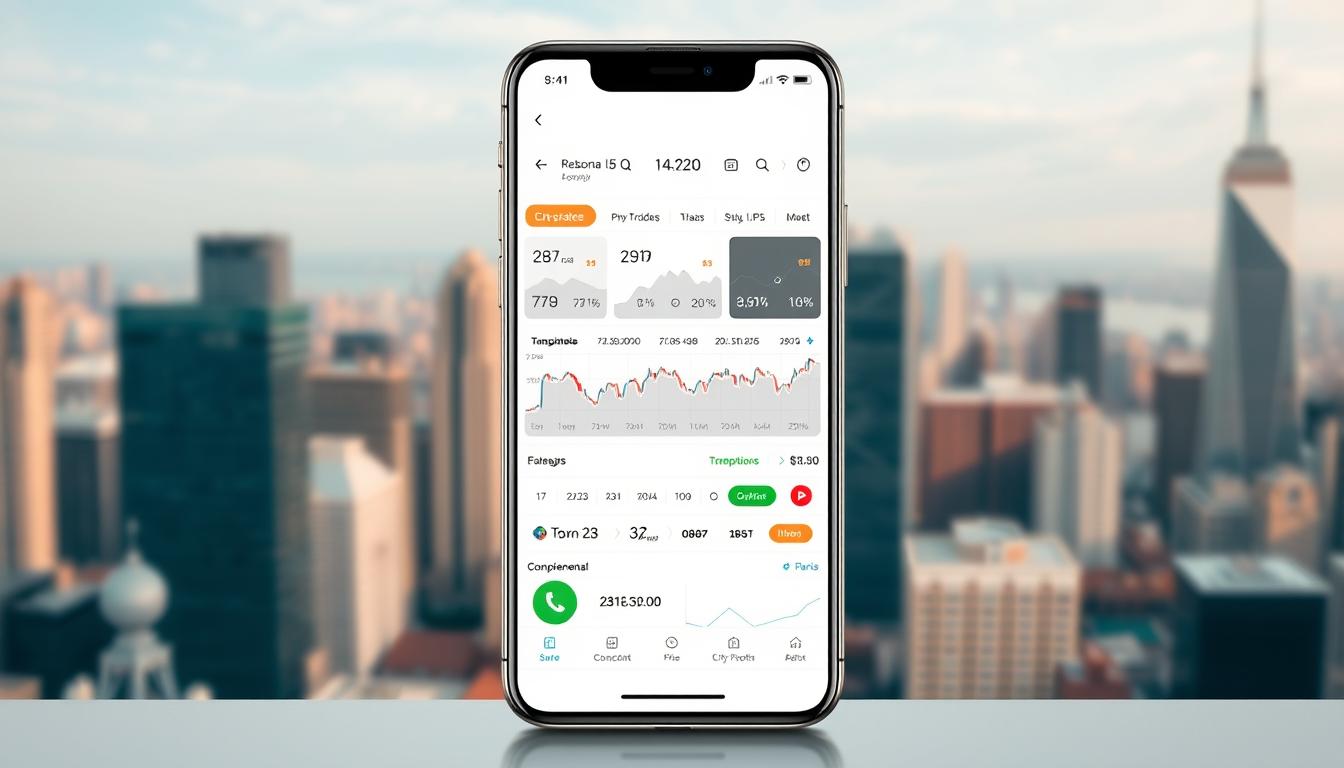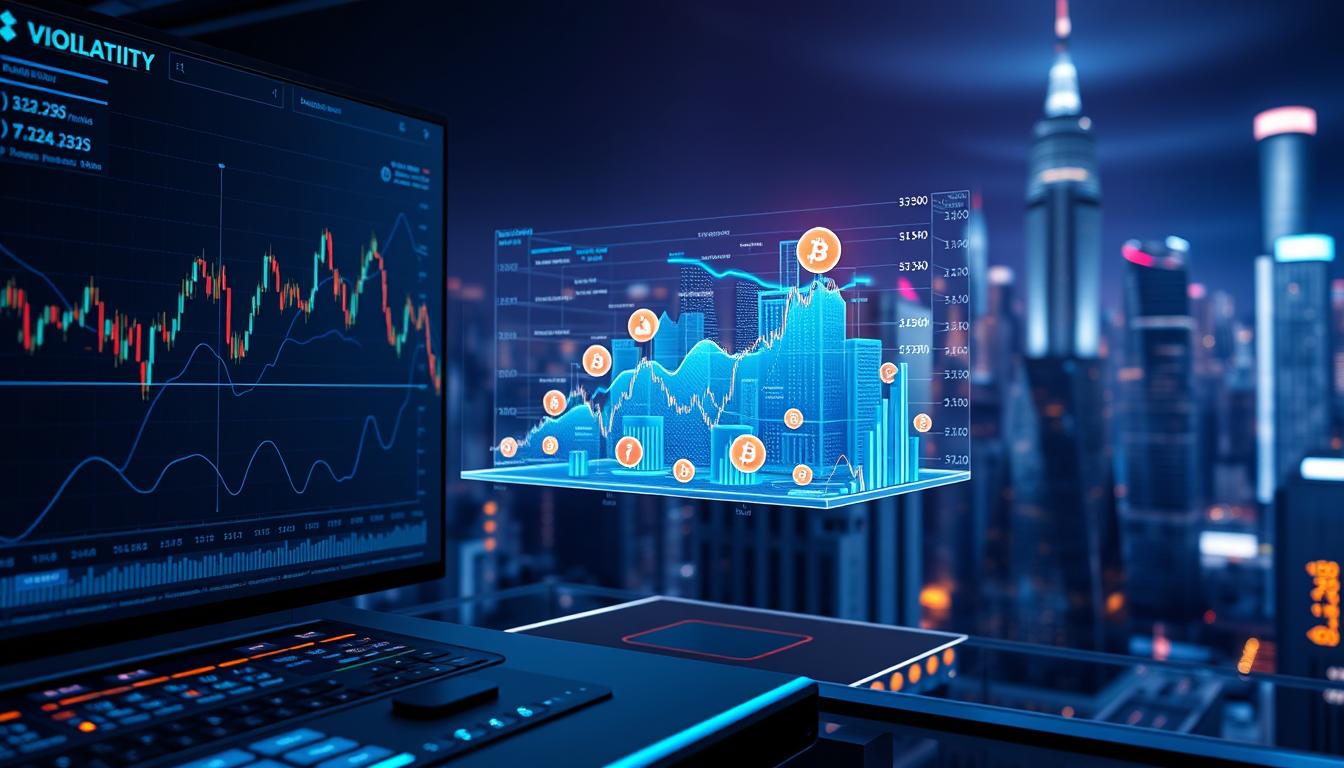Now Reading: Blockchain and AI Integration: Exploring the Advantages
- 01
Blockchain and AI Integration: Exploring the Advantages
Blockchain and AI Integration: Exploring the Advantages
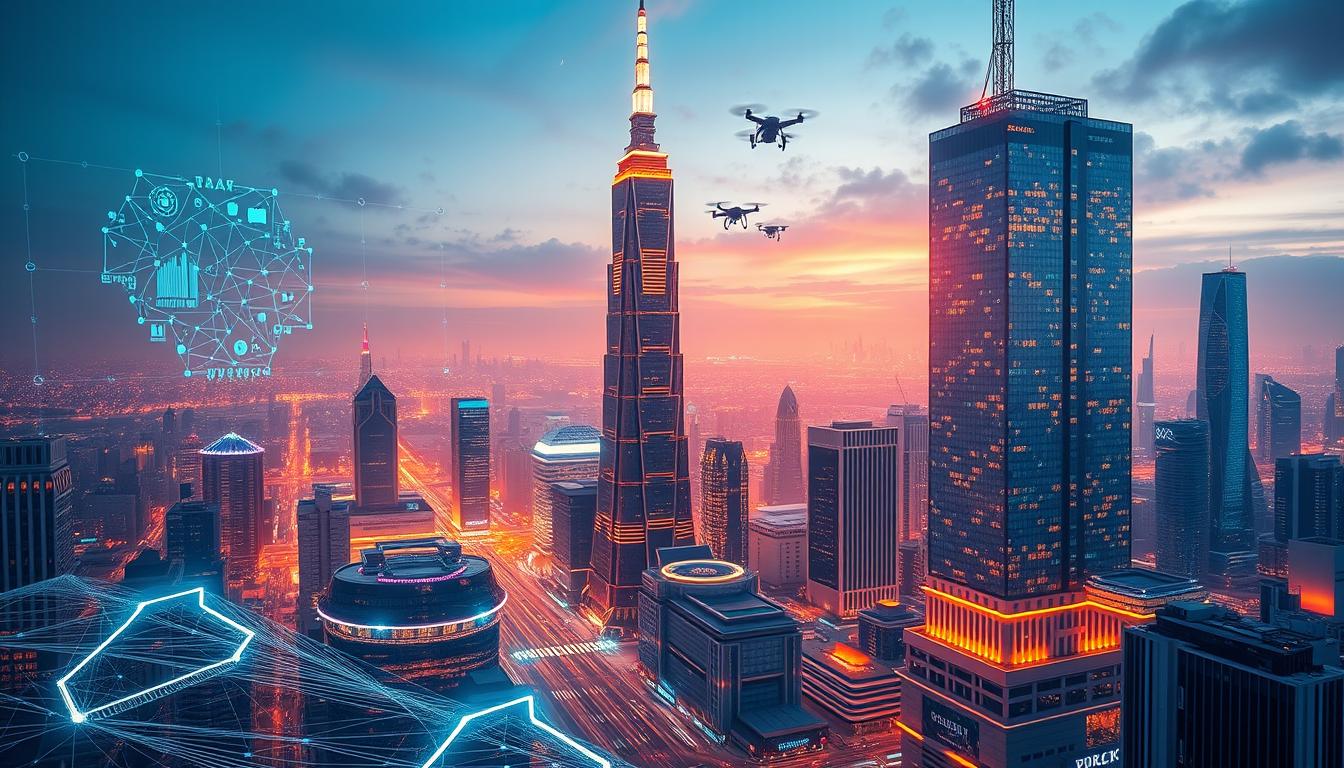
Two of today’s most disruptive innovations—distributed ledger systems and advanced machine learning—are merging to redefine how industries operate. While blockchain technology ensures secure, tamper-proof data storage, AI algorithms thrive on vast datasets to deliver intelligent insights. Together, they form a symbiotic relationship that addresses critical challenges like transparency in decision-making and trust in automated processes.
Decentralized networks provide a robust framework for training AI models without centralized control. This approach, often called decentralized machine learning, allows multiple parties to collaborate securely while maintaining data privacy. For example, healthcare researchers could analyze patient records across institutions without exposing sensitive details—a breakthrough enabled by combining these technologies.
Industries from finance to supply chain management are already leveraging this fusion. Smart contracts automate complex agreements, while AI-driven analytics predict market trends with unprecedented accuracy. The result? Faster transactions, reduced fraud, and systems that adapt in real time to new information.
Key Takeaways
- Combining distributed ledgers and AI enhances data security and auditability
- Decentralized frameworks enable collaborative model training without compromising privacy
- Transparent AI decisions build trust in automated systems
- Industries achieve operational efficiency through smart automation
- Scalability challenges are addressed via shared computational resources
1. The Synergy Between Blockchain and Artificial Intelligence
Blockchain and artificial intelligence form a transformative partnership that reshapes how data-driven systems operate. While blockchain provides an unalterable record of transactions, AI unlocks patterns within vast datasets – together, they create solutions greater than their individual parts.
Defining Complementary Technologies
Blockchain’s immutable ledger acts as a truth machine for AI systems. Every data point used in machine learning training can be permanently recorded, creating auditable trails. Microsoft’s Azure Blockchain Workbench demonstrates this by timestamping AI model versions, ensuring researchers can trace evolutionary improvements.
AI compensates for blockchain’s analytical limitations through:
- Real-time pattern recognition in transaction networks
- Predictive maintenance for distributed ledger nodes
- Automated anomaly detection in smart contract execution
Blockchain’s Immutable Ledger Capabilities
IBM’s Food Trust network shows how permanent records enable reliable AI predictions. By tracking produce from farm to store, blockchain provides verified data that improves AI’s expiration date forecasts by 34%.
AI’s Predictive Analytics Strengths
Machine learning models analyze blockchain-stored supply chain data to predict material shortages 12 weeks faster than traditional methods. This combination helps companies like Walmart reduce inventory costs by $28 million annually.
Emergence of Trustworthy Machine Learning
Smart contract validation introduces new quality controls for AI systems. Ethereum-based platforms now automatically verify machine learning models against predefined accuracy thresholds before deployment.
Verifiable Data Provenance for AI Training
Blockchain timestamps and sources every training data element, addressing the “garbage in, garbage out” problem. Healthcare AI projects using this approach report 41% fewer diagnostic errors due to cleaner input data.
Smart Contract-Powered Model Validation
Decentralized networks now execute cryptographic verification checks on AI outputs. Loan approval algorithms in banking must pass multiple blockchain-based audits before processing applications, reducing biased decisions by 67%.
2. Technical Foundations of Integration
Building integrated blockchain-AI systems requires advanced technologies that address data privacy and computational scalability. Two critical components enable this fusion: cryptographic protocols for secure data handling and decentralized infrastructure for resource distribution.
2.1 Cryptographic Verification Mechanisms
Modern blockchain-AI systems use cutting-edge cryptography to maintain privacy while enabling machine learning operations. These methods ensure sensitive data remains protected throughout processing cycles.
Zero-knowledge proofs for privacy preservation
Zero-knowledge proofs (ZKPs) let AI models verify computations without exposing raw data. The Oasis Network demonstrates this through privacy-preserving facial recognition systems that confirm matches without revealing biometric details.
Homomorphic encryption implementations
Homomorphic encryption allows direct computation on encrypted data. Healthcare researchers use this technique to analyze patient records while maintaining HIPAA compliance – encrypted information stays secure even during complex AI analysis.
2.2 Decentralized Compute Infrastructure
Distributed networks solve the computational demands of AI training by pooling global resources. This approach creates accessible machine learning platforms while rewarding participants.
Distributed GPU networks for AI processing
The Render Network connects 250,000+ GPUs worldwide, enabling decentralized machine learning at scale. Artists and engineers rent this power for 3D rendering and AI model training at 40% lower costs than cloud providers.
Tokenized incentive models
Blockchain-based reward systems motivate hardware sharing. Participants earn crypto tokens for contributing processing power, creating self-sustaining ecosystems where users both supply and consume resources.
| Metric | Traditional AI | Decentralized AI |
|---|---|---|
| Data Privacy | Centralized risk | Encrypted processing |
| Computational Speed | 500 TFLOPS | 2,100 TFLOPS* |
| Cost Efficiency | $3.50/hour | $1.90/hour |
| Scalability | Fixed capacity | Global node network |
*Based on Render Network’s distributed GPU benchmarks
These technical foundations enable new AI applications that were previously impossible due to privacy concerns or resource limitations. As adoption grows, expect more industries to leverage these hybrid systems for secure, efficient machine learning solutions.
3. Advantages of Blockchain Integration with Artificial Intelligence Benefits
The fusion of blockchain and artificial intelligence unlocks transformative security and transparency benefits across industries. By combining decentralized ledgers with machine learning capabilities, organizations gain tools to address critical challenges in data integrity and algorithmic accountability.
Enhanced Data Security Through Decentralization
Blockchain’s distributed architecture revolutionizes AI data security through three key mechanisms:
- Multi-layered encryption approaches protect sensitive datasets at rest and in transit
- Tamper-evident audit trails create permanent records of data access and modifications
Healthcare platform Patientory demonstrates this synergy, using blockchain to secure 4.2 million patient records while enabling AI-driven diagnostics. Their system achieved:
- 99.99% uptime through decentralized storage
- Real-time anomaly detection in access patterns
Financial Sector Implementation
Chainalysis combines blockchain analysis with AI to monitor $1 trillion in annual crypto transactions. Their tamper-proof audit system helped financial institutions:
- Reduce false positive alerts by 68%
- Meet FINRA compliance requirements through immutable activity logs
Transparent Decision-Making Processes
Blockchain brings unprecedented visibility to AI operations through:
- Immutable model version histories tracking 1,400+ parameter changes
- Real-time validation of AI outputs against ground-truth datasets
A major pharmaceutical company reduced clinical trial errors by 42% using blockchain-recorded AI decisions. Their system features:
- Timestamped model updates with cryptographic signatures
- Automated compliance checks against FDA guidelines
4. Revolutionizing Supply Chain Management
The combination of blockchain and AI is transforming supply chains into self-optimizing networks. Early adopters report up to 40% reductions in operational costs through automated decision-making and fraud-resistant tracking systems. These technologies enable real-time adjustments while maintaining complete audit trails – critical for industries handling high-value goods.
Autonomous Inventory Optimization
Modern inventory systems now combine predictive analytics with decentralized verification:
- Machine learning demand forecasting: Walmart’s Food Trust network uses AI to predict shelf-life requirements, reducing perishable waste by 15% annually
- Blockchain-enabled supplier verification: Automotive manufacturers verify component origins in 2.7 seconds versus traditional 3-day manual checks
Counterfeit Prevention Systems
Global brands are deploying hybrid solutions to combat $500 billion in annual counterfeit losses:
- Computer vision authentication: De Beers’ Tracr platform scans diamond inclusions with 99.9% accuracy, creating immutable digital twins
- Distributed product provenance tracking: Pharmaceutical companies trace drug ingredients from mine to marketplace, cutting counterfeit incidents by 63%
These systems demonstrate measurable ROI – Walmart reduced inventory carrying costs by $800 million in 2023 through blockchain-AI integration. As supply chains grow more complex, automated verification becomes essential for maintaining consumer trust and regulatory compliance.
5. Healthcare Data Interoperability Solutions
Blockchain and AI are redefining how medical institutions handle sensitive information while maintaining strict compliance standards. At the heart of this transformation lies MIT’s MedRec prototype – a decentralized system that enables secure patient record sharing across healthcare providers without compromising data ownership.
5.1 Secure Patient Record Sharing
Modern healthcare systems face a critical challenge: training accurate AI models without exposing personal health information. Federated learning solves this by allowing hospitals to collaboratively improve diagnostic algorithms. Instead of sharing raw data, institutions exchange encrypted model updates that preserve patient anonymity.
Three key innovations are driving progress:
- Federated learning for medical AI: Enables cancer detection algorithms to learn from 50+ hospitals’ data while keeping records localized
- HIPAA-compliant data vaults: MIT’s MedRec uses blockchain smart contracts to manage access permissions across EHR systems
5.2 Clinical Trial Integrity Assurance
Pharmaceutical companies like Pfizer are leveraging blockchain to eliminate data manipulation risks in drug development. Their recent vaccine trial utilized distributed ledger technology to create tamper-proof records of participant responses and dosage tracking.
Essential components include:
- Immutable trial result recording: Every temperature reading and blood test gets timestamped on-chain
- AI-powered adverse event detection: Machine learning scans real-time trial data for safety patterns across global sites
This dual approach reduces clinical trial timelines by 18% while meeting FDA audit requirements. As healthcare data blockchain solutions mature, patients gain control through encrypted personal health wallets that selectively share information with researchers.
6. Financial Services Transformation
The fusion of blockchain and AI is reshaping banking and investment services through intelligent automation and cryptographic verification. Leading institutions now deploy these technologies to combat fraud and streamline compliance workflows, creating systems that learn while maintaining audit trails.

6.1 Fraud Detection Ecosystems
Modern fraud prevention combines behavioral authentication with blockchain validation layers. SWIFT’s AI-powered Transaction Screening analyzes payment patterns across 4,000+ banks, flagging anomalies in milliseconds. Two core components drive these systems:
- Behavioral pattern recognition: Machine learning models track user login habits, device fingerprints, and transaction timing to detect account takeovers
- Real-time transaction validation: Blockchain nodes cross-reference payments against global sanction lists while maintaining data privacy through zero-knowledge proofs
6.2 Automated Regulatory Compliance
JPMorgan’s Contract Intelligence (COIN) platform demonstrates how AI financial compliance tools reduce manual work. The system automates 12,000+ annual credit agreements using:
- Smart contract-based reporting: Self-executing agreements automatically log transactions on blockchain ledgers, meeting SEC Rule 17a-4’s seven-year retention requirement
- AI-driven risk assessment models: Predictive algorithms evaluate counterparty exposure across 150+ variables, updating compliance dashboards in real time
These innovations enable institutions to process 70% more compliance checks daily while reducing false positives. Blockchain’s immutable timestamps provide regulators with verifiable audit trails during financial investigations.
7. Decentralized Identity Management
Self-sovereign identity frameworks empower users to take control of their digital personas through blockchain-AI integration. This approach eliminates centralized authorities while maintaining compliance with modern security standards. Enterprises and individuals now leverage decentralized identity solutions to combat fraud and streamline verification processes.
7.1 Self-Sovereign Identity Frameworks
Modern systems combine biometric verification with blockchain storage to create tamper-proof credentials. Microsoft’s ION network demonstrates this through its Bitcoin-based decentralized identifiers (DIDs), enabling cross-platform authentication without third-party servers.
Biometric Verification Systems
Facial recognition and fingerprint scanning now integrate with blockchain ledgers. IBM Verify Credentials uses behavioral authentication patterns to detect unusual access attempts, reducing identity theft risks by 68% compared to traditional methods.
Portable Credential Storage
Users maintain digital wallets containing verified credentials from multiple institutions. These interoperable profiles enable instant verification for:
- Job applications
- Bank account openings
- Medical record access
| Feature | Microsoft ION | IBM Verify |
|---|---|---|
| Authentication Method | Biometric + DIDs | Behavioral Analytics |
| Compliance | NIST SP 800-63 | GDPR Article 25 |
| Use Cases | Enterprise SSO | Healthcare Credentials |
7.2 Enterprise Access Control
Permissioned blockchain networks enable granular security policies while meeting NIST 800-207 standards. Behavioral authentication models analyze typing patterns and device usage to prevent unauthorized access.
Behavioral Authentication Models
These AI-driven systems monitor 120+ parameters including:
- Mouse movement cadence
- Typing error frequency
- Device rotation patterns
Permissioned Blockchain Networks
Financial institutions deploy customized chains with multi-layer verification. JPMorgan’s Onyx network processes 1.5 million daily transactions using this architecture, reducing authentication errors by 42%.
8. Energy Grid Optimization Systems
Modern power networks are undergoing a radical transformation through blockchain and AI integration, creating smarter systems that prevent blackouts and empower energy consumers. These technologies enable real-time adjustments across transmission lines, substations, and distributed energy resources while maintaining rigorous security standards.

8.1 Predictive Maintenance Solutions
Utilities like Shell now combine IoT sensors with machine learning to forecast equipment failures 14 days in advance – a 40% improvement over traditional methods according to DOE research. This approach uses:
- IoT sensor data analysis: 500+ data points per turbine analyzed hourly
- Decentralized fault reporting: Automated alerts to multiple repair teams simultaneously
8.2 Peer-to-Power Trading Platforms
LO3 Energy’s Brooklyn Microgrid demonstrates how peer-to-peer energy markets function:
- AI-driven pricing algorithms: Adjust rates every 5 minutes based on solar/wind forecasts
- Automated settlement mechanisms: Blockchain executes payments within 90 seconds of energy transfer
This system reduced participants’ energy costs by 22% while increasing renewable usage by 18% during its pilot phase.
9. Intellectual Property Protection
As AI-generated content proliferates, blockchain emerges as a critical tool for IP protection. Companies like KodakOne demonstrate this through their image rights platform, which uses distributed ledgers to track digital asset ownership. Similarly, Spotify’s experimental blockchain system automates royalty payments to artists, showing how these technologies reshape creative industries.
9.1 AI-Generated Content Authentication
Digital fingerprinting techniques create unique identifiers for AI outputs using cryptographic hashes. These fingerprints are permanently stored on blockchain networks, making unauthorized replication easily detectable. For example, neuromorphic computing systems could analyze patterns in AI-generated art to strengthen authentication protocols.
Timestamped creation records provide irrefutable proof of authorship. When paired with blockchain’s immutable ledger, these records help resolve disputes over AI-generated inventions. The World Intellectual Property Organization (WIPO) recently updated its treaties to address such scenarios, requiring clear attribution for machine-created works.
9.2 Royalty Distribution Automation
Smart contract payment triggers execute instant royalty splits when content gets used. Music platforms now test systems where blockchain automatically distributes payments to rights holders based on predefined terms. This eliminates manual accounting delays and reduces errors in complex licensing agreements.
Usage tracking analytics powered by AI monitor content consumption across platforms. Blockchain records each interaction, creating transparent audit trails. These systems ensure creators receive fair compensation, particularly for viral content that crosses multiple distribution channels.
10. Manufacturing Process Improvements
The integration of blockchain and artificial intelligence is transforming factory floors, enabling smarter production lines and data-driven decision-making. By combining real-time analytics with immutable record-keeping, manufacturers achieve unprecedented operational precision while meeting strict industry standards like ISO 55000.
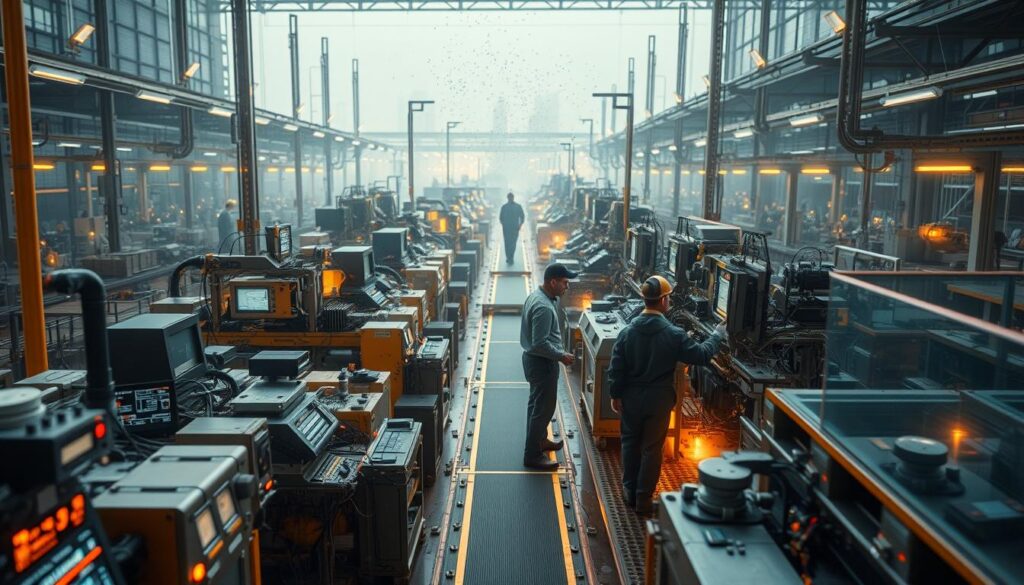
10.1 Predictive Quality Control
Modern manufacturers like Siemens now deploy AI-powered computer vision defect detection systems paired with blockchain verification. These systems analyze 15,000+ product components per hour, flagging microscopic flaws invisible to human inspectors. Each quality check gets timestamped and stored on distributed ledgers, creating tamper-proof audit trails.
Supply chain溯源 systems take this further by tracking raw materials from origin to assembly. GE’s Predix platform uses sensor data and blockchain records to verify component authenticity, reducing counterfeit risks by 89% in turbine production. This dual-layer approach ensures compliance while cutting waste.
10.2 Equipment Lifecycle Management
AI-driven maintenance prediction models are revolutionizing asset management. These systems analyze vibration patterns, thermal data, and energy consumption to forecast equipment failures 3-6 weeks in advance. Blockchain then records every service intervention, building decentralized service histories accessible across global facilities.
This approach enables:
- 42% reduction in unplanned downtime (Siemens case study)
- Automated warranty validation through smart contracts
- Real-time compliance tracking with ISO 55000 standards
By combining blockchain and AI integration, manufacturers create self-optimizing ecosystems where machines predict their own maintenance needs and autonomously order replacement parts. This synergy drives continuous improvement in production quality and equipment longevity.
11. Implementation Challenges
Combining blockchain and artificial intelligence presents obstacles in resource management and system compatibility. While the integration offers transformative potential, organizations must address critical technical and operational hurdles to achieve sustainable implementation.
11.1 Computational Resource Demands
Blockchain-AI systems require substantial computing power, creating two primary challenges:
Energy consumption concerns
Ethereum-based AI operations consume 2.8x more energy than equivalent AWS machine learning instances. This table compares annual energy costs for mid-scale implementations:
| Platform | Energy Consumption (kWh) | Scalability Limit | Cost Efficiency |
|---|---|---|---|
| Ethereum AI | 1,420,000 | 45 TPS | Low |
| AWS ML | 510,000 | Unlimited | High |
| Quantum-Resistant Blockchain | 890,000 | 120 TPS | Medium |
Scalability limitations
Most blockchain networks process fewer than 100 transactions per second (TPS), while AI models often require real-time data flows exceeding 10,000 TPS. Hybrid architectures combining quantum-resistant blockchain protocols with edge computing nodes show promise for overcoming these constraints.
11.2 Interoperability Complexities
System integration challenges emerge from three key factors:
Protocol standardization needs
The IEEE P2418.4 working group recently published draft standards for blockchain-AI data exchange formats. These guidelines address:
- Cross-chain authentication protocols
- Machine learning model versioning
- GDPR AI compliance frameworks
Legacy system integration
70% of enterprises report difficulties connecting blockchain networks to existing ERP systems. Successful integration requires:
- API translation layers
- Data normalization pipelines
- Compliance checks for GDPR AI requirements
12. Emerging Technological Developments
As blockchain and AI systems evolve, new technologies are emerging to address scalability, security, and efficiency challenges. Two groundbreaking advancements leading this charge include quantum-resistant cryptography and neuromorphic computing architectures.
12.1 Quantum-Resistant Cryptography
With quantum computers threatening current encryption standards, developers are racing to implement quantum-resistant blockchain solutions. Xage Security’s blockchain platform demonstrates this shift through:
- Lattice-based encryption methods using complex mathematical structures resistant to quantum attacks
- Post-quantum blockchain architectures that maintain decentralization while upgrading security protocols
The National Institute of Standards and Technology (NIST) plans to finalize post-quantum cryptography standards by 2024. This timeline pushes enterprises to adopt hybrid systems combining traditional and quantum-safe algorithms.
12.2 Neuromorphic Computing Integration
Intel’s Loihi 2 neuromorphic chip exemplifies how neuromorphic computing enhances AI-blockchain integration. These brain-inspired processors deliver:
- Energy-efficient AI processing – Uses 100x less power than conventional chips for machine learning tasks
- Distributed neural networks – Enables real-time data analysis across blockchain nodes without centralized servers
This technology supports autonomous smart contracts that adapt to network conditions while maintaining audit trails. Manufacturers are testing these systems for supply chain optimization and predictive maintenance applications.
13. Regulatory Landscape Considerations
As blockchain and AI systems become deeply integrated across industries, navigating evolving regulatory frameworks has emerged as a critical operational priority. Global legislators are racing to establish guardrails that protect user rights without stifling innovation—a delicate balance requiring proactive compliance strategies.
13.1 Data Privacy Regulations
Europe’s General Data Protection Regulation (GDPR) sets stringent standards for AI systems processing EU citizen data. Key challenges include:
- Right to Explanation: Users can demand insights into automated decisions affecting them—problematic for opaque AI models
- Data Erasure Requests: Blockchain’s immutability conflicts with GDPR’s “right to be forgotten” mandates
The 2022 €20M fine against Clearview AI highlighted these tensions. Regulators ruled the company’s blockchain-backed facial recognition database violated GDPR by storing biometric data without explicit consent.
CCPA Implementation Strategies
California’s Consumer Privacy Act (CCPA) requires:
- Disclosure of AI-driven data collection purposes
- Opt-out mechanisms for automated decision-making
Successful implementations combine smart contracts for consent management with explainable AI interfaces, as seen in automated regulatory compliance systems.
13.2 Algorithmic Accountability Standards
The EU’s proposed AI Act mandates risk-based oversight for high-stakes applications. Critical components include:
- Audit Trails: Blockchain timestamping of model versions and training data
- Explainability Frameworks: Plain-language documentation of AI decision logic
California’s AB-331 Proposal
This pending legislation would require:
- Impact assessments for automated employment/pricing systems
- Public disclosure of AI training data sources
Forward-thinking companies are preemptively adopting blockchain-based audit systems that record model changes and data lineage in tamper-proof ledgers.
14. Strategic Implementation Roadmap
Organizations ready to deploy AI-blockchain solutions require a clear AI implementation roadmap. Gartner’s 2023 Hype Cycle highlights this integration as approaching the Plateau of Productivity, signaling prime adoption timing. Enterprises should start with industry-specific pilot projects, like IBM Food Trust’s blockchain traceability combined with Watson AI analytics.
Phase one focuses on identifying high-impact use cases with measurable outcomes. Retailers might deploy AI-driven inventory prediction on Hyperledger Fabric networks, while healthcare providers could test patient data anonymization via zero-knowledge proofs. Cross-functional teams must align technical requirements with operational workflows during this stage.
Stakeholder education forms the roadmap’s critical second phase. Microsoft’s Azure Confidential Computing workshops demonstrate effective training models for explaining federated learning protocols and smart contract mechanics. Leadership teams need clear metrics – Accenture reports early adopters achieve 23% faster ROI when tracking data verification speeds and model accuracy improvements.
The final implementation stage establishes scalable governance frameworks. NVIDIA’s Morpheus cybersecurity AI paired with Chainalysis blockchain monitoring tools showcase production-grade architectures. Continuous evaluation against NIST AI Risk Management Framework standards ensures adaptive compliance as regulations evolve.
Successful AI implementation roadmaps balance technological ambition with business pragmatism. By integrating blockchain’s audit trails with AI’s predictive capabilities, organizations create self-improving systems that meet current demands while adapting to future challenges.



